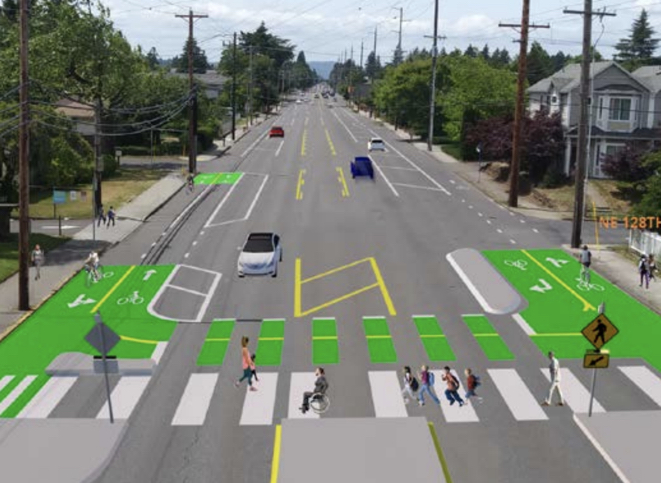
A new program from the Portland Bureau of Transportation has quietly emerged as the agency’s latest attempt to make progress on our deadliest streets.
I stumbled across the East Portland Arterial Streets Strategy (EPASS) while on PBOT’s website a few weeks ago and have now learned a bit more about what we can expect from it.

Here’s the background: PBOT has significant plans and funding ($255 million allocated to the East Portland in Motion plan) devoted to taming east Portland arterials. But progress is painfully slow. 15 of the 32 people who’ve died in traffic crashes so far this year were using streets east of 82nd Avenue.
In an effort to consolidate and hasten the 15 projects currently in progress or in the pipeline — and do a better job communicating changes to residents and business owners — PBOT says they plan to develop a concept design for every city street with four or more lanes east of 82nd Avenue. The designs will answer questions about how many driving lanes a street should have, what type of bike lanes, transit lanes, and medians are appropriate, how best to manage curb cuts, turning movements, and so on. The designs will be based on community input, safety analysis and traffic modeling.
According to PBOT, they created EPASS to answer concerns they’ve heard from east Portland residents about how planned projects will impact surrounding streets. Fears that road diets will lead to more cut-through traffic in neighborhoods is a very common concern. Asked about the impetus for EPASS, a PBOT spokesperson told us, “If we’re reducing lanes on multiple streets in the same area, can we do that without delay and diversion onto other streets that would impact the community?”
Advertisement

One of PBOT’s challenges in their work east of 82nd is that they’re re-allocating road space on arterials and simultaneously trying to develop “low-stress, family-friendly” neighborhood greenways that meet their standards for auto traffic volumes.
This is also a public relations move that will aid PBOT’s communications strategy. The agency says they want to take a, “more holistic look at the package of projects coming to east Portland and provide the community with a more comprehensive picture of the improvements and impacts coming their way.”
PBOT plans to identify a few new projects that could be eligible for future funding. Road segments they plan to address for the first time through EPASS include: SE Foster from 101st to 122nd; NE Glisan between 82nd and 102nd; and NE Sandy from 82nd to I-205.
EPASS is not to be confused with PBOT’s existing High Crash Network program, which doesn’t get into detailed cross-section designs. PBOT says we should think of EPASS as being similar to a technical design guide focused specifically on streets with four or more lanes.
The effort will be carried out by Portland-based consulting firm HDR Inc. (working with city staff) via $265,000 in PBOT general operating funds.
If you’d like to learn more, check out the official website. You can also meet EPASS Project Manager Steve Szigethy at the December 12th meeting of the East Portland Land Use and Transportation Committee.
— Jonathan Maus: (503) 706-8804, @jonathan_maus on Twitter and jonathan@bikeportland.org
Never miss a story. Sign-up for the daily BP Headlines email.
BikePortland needs your support.

